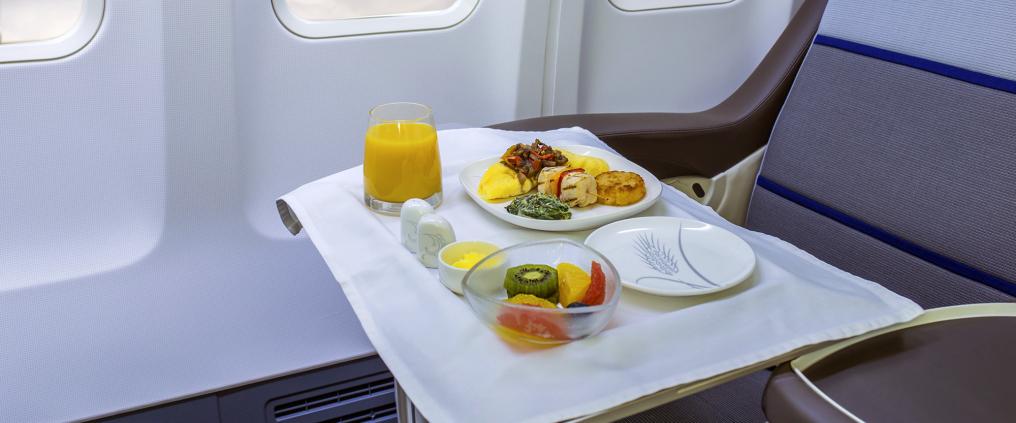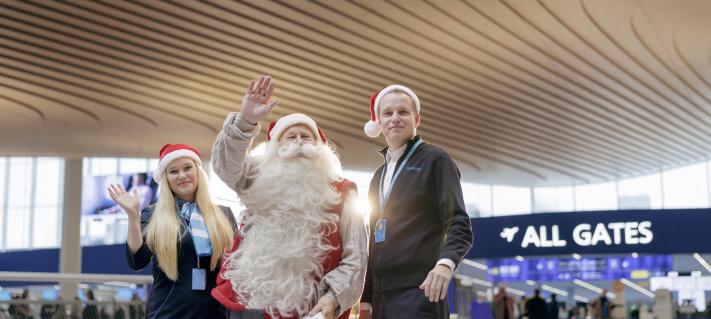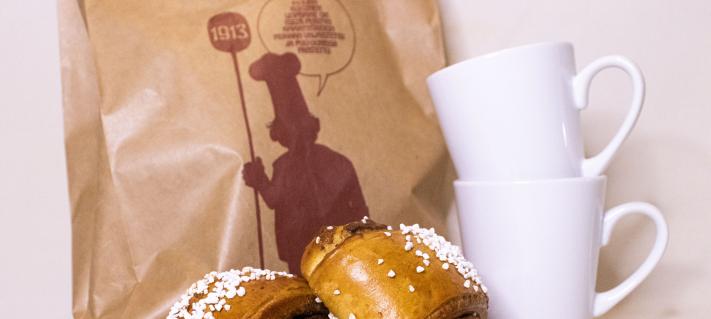The first airline meals, in the form of pre-packed lunch boxes, were served on a Handley-Page flight from London to Paris in October 1919. Since then, airline food has come a long way, with top chefs developing menus for carriers and airline food photography gaining popularity on the web. Whether you fly first class or premium economy, at some point you must have wondered how braised beef and curry chicken are dished at 35,000 feet.
The German LSG Group is the world’s largest provider of in-flight services, consisting of 159 companies worldwide. They deliver 578 million meals a year for more than 300 airlines in 51 countries. According to Kerstin Cynthia Lau, Director Corporate Communications, the company employs more than 700 chefs worldwide who are experts in the field of airline catering. LSG Sky Chefs maintains a facility in Helsinki.
“Our extensive product development network collaborates to create menu suggestions tailored for different airlines,” says Lau. “This enables us to plan menus that taste good onboard and also appeal to customers with different preferences.”
From putting a menu together to packing a trolley, Lau explains how in-flight meals are made.
Who decides on the menu?
Although LSG Sky Chefs does provide menu design services, our airline customers make final decisions on all aspects of the catering menu. Typically, if we are involved in the menu design process, our culinary experts will develop new menu selections for the airlines to evaluate before the menu is chosen and approved.
How long in advance is this menu prepared?
The menu development cycle until a meal is eventually “flying” can take up to six months.
What happens to food when a flight is delayed?
Due to hygiene and food safety restrictions, we need to follow strict rules. So depending on the delay, the prepared meals can still be used or need to be exchanged.
Which types of dishes taste better and maintain quality over time?
Not much is "universal" in the world of food. Regional tastes or restrictions often defines what will be served. Most of the time there are options for passengers to choose from, for example, Western style or Asian flavors.
Pasta dishes, however, seem to be one of these “universal” preferences as they can be offered in many varieties – with meat or fish, as a vegetarian option, and so on.
Fish and fresh food are also very popular, probably due to the fact that they are light.
In menu development, we seek ingredients that have a naturally rich taste as delicate flavors soften further and colors fade high in the air.
How many meals does an airline prepare on average every day?
It depends on the number of aircraft, the catering service concept by the airline, and the routes an airline offers.
In Helsinki, for example, LSG Sky Chefs produces about over 8 000 meals per day for more than 200 flights during the summer time.
Who cooks the food? Where does this all happen?
All around the world, the on-board meals are produced in one of our 200 facilities which are located at or in close proximity to the airport. There are exceptions to this, including, for example, frozen-food meals which come from our frozen food plant at LSG Sky-Food in Alzey, Germany, and are sent to other facilities. We also have standard items that every facility receives prepackaged.
How do you prepare a meal tray?
After the preparation of each item, the meal components are put together in the so-called “tray set-up.” Dishes that will be warmed up in the aircraft are packed separately into oven rack. All food is chilled down to 5°C and then loaded into trolleys, which are also cooled as international regulations of food safety require. Trolleys are packed so that it is makes service onboard smooth and pleasant for the cabin crew and passengers.
The trolleys, containers, and any other equipment are put on a high-loader truck – designed especially for the loading and unloading of on-board equipment – and those are driven to the apron, where everything is brought onto the plane by an LSG Sky Chefs driver. This is where the handover meeting with the cabin crew occurs.



